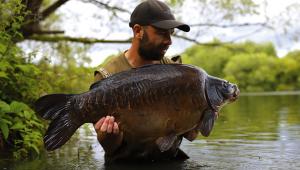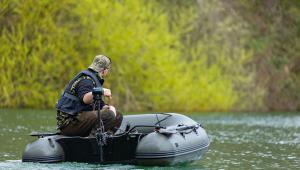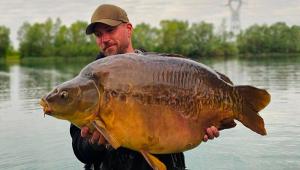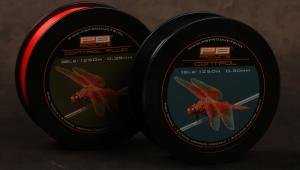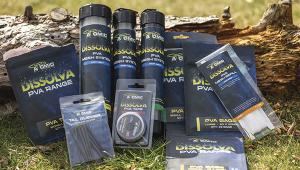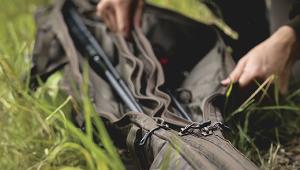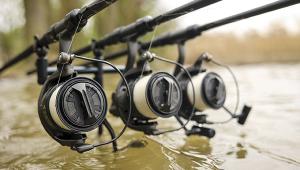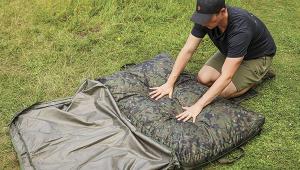Five Tips For Cold-Water Success!
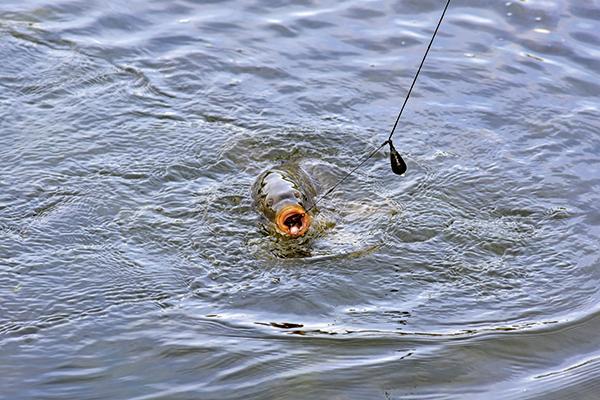
As I write, we are just “on the cusp”, as I’d say.
The nights are starting to become longer than the days and the carp know this. They realise that the cooler nights are heading their way and so they are looking to pack a bit on prior to the change of seasons.
So, as well as the carp, we carp anglers need to change our mind-set if we are still going to catch a few. You can no longer do what you were doing a few months or even weeks ago and expect it to keep producing the goods – spodding out a bucketful of boilies and particles for example.
Small changes can make all the difference. As the water starts to naturally clear, the carp will be less reluctant to come into the margins. This is just one illustration of how things will change.
With this in mind, I’d like to take you through the five top tips that I adopt to keep me catching and hopefully they will work for you too…
Location Is Paramount
It’s an old saying, but that’s how sayings work – you can’t catch what isn’t there. Yes, that sounds rather flippant, but it is better to spend 20 minutes in the right area than it is spending 20 days in the wrong one. Ideally, when I get to a water, I will look for ‘shows’. This could be fish topping or crashing out. It could be bubbles, swirls or even sightings of them sat on or just under the surface. Of course, this is the Holy Grail of carp fishing – when we get to the lake, all the carp are conveniently telegraphing their whereabouts for us! This is rarely the case, particularly the further we go into the colder weather. So, we need to look for other clues to guide us in our quest for carp. The first one is wind. In the summer, it counts to get on the front of a new or warm wind as the fish often follow it. From the autumn onwards, even a southwesterly, which is supposed to be warm, will still have quite a bite to it, as the air temperature is lower. This means that I will always look to get on the back of a wind, regardless of its direction.
The next step is to look for the deeper, not necessarily the deepest. water, as this will be more comfortable for the carp as they will be able to sit mid-water, where there is a thermocline. The final part of my location jigsaw is to find the silt. In the summer, I’m looking for gravel or hard, smooth, polished areas as this indicates feeding spots. In the cooler weather, I turn 180 degrees in my thinking and look for the softer, siltier areas. The reason being that what little natural food there is will all be found in the silt. After all, very few plants grow on concrete! The carp will know this and so head to these areas naturally as they can get an easy, high protein meal, with very little effort.
When it comes to fishing over these softer spots, there is silt and there is silt. Ideally, I’m looking for the soft spots, not the really deep areas of silt, those areas where the lead ‘plugs’, as this is too soft to get a decent presentation over. I like to lead around, rather than using a marker float. The lead I use is a breakaway sea lead. The reason being that the tines on the lead will pick up bits of whatever it is dragged through. The harder spots will see the lead coming back clean. When it is over silt, it will bring back bits of dead leaf and other detritus. It will also have silt clinging to it. Using a simple smell test, you can generally tell if it is thicker silt as it will smell very acidic and acrid – that smell that, as a carp angler, you know will very quickly permeate into your hook baits. Whether this puts the carp off, I don’t really know, but it certainly lowers my confidence, so why risk it? If you can find an area where the substrate starts to change, say silt to weed or gravel to silt, these spots are usually very good, if not harder to find. I think it is because it offers the fish the best of both worlds.
I fish a lot of gravel pits, so features are also worth looking for. The bottom of that bar, which in the summer you fished on top of is a perfect place to place a hook bait. But, in the winter you do get the odd ‘freaky’ day, where the air temperature goes very high. On these days, I’d have no hesitation in fishing on top of the bar again or using zig rigs, which work really well in the cooler months. Basically, what I’m trying to say is seek and you will find.
The fish are still in the lake… somewhere. All you need to do is take a little time and effort to find them. After all, you’re not looking to get a hit of fish, although that would be nice; what you want to do is fish for a fish at a time. I see too many anglers drop into the first free swim they come to, or a swim which they did well from in the summer and expect it to be the same at this time of year.
Tackle Choices
Today I’m using braid as there is a still a fair bit of weed in the water, but as this dies off and the water gets clearer, I’ll swap over to a fluorocarbon main line. Fluoro sinks like a stone, so everything is pinned down. It’s these one per cents that add up in the winter, I find.
When it comes to fluoro, make sure you run it through a cloth when you wind in, just to clean it. If not, when algae sticks to it, it won’t work as effectively. Again, a small but important thing.
Leader-wise I always use three feet of leadcore, but if it is banned I’ll swap over to a fluorocarbon leader. This again keeps everything pinned to the deck.
The rig is a helicopter. This is important as I’m fishing over silt, so it ensures I still get a good presentation. The top bead is pushed around eight to 10 inches up the leader, allowing the lead to sink without the risk of pulling the hook link in with it. Don’t worry about the bite indication because, if you always feel for a ‘drop’ with the lead, the hook link will rest against the top bead anyway.
I also like to use a big lead in the winter, either a 3 or 4oz dumpy pear. The fish are more lethargic, so they are less inclined to spook from the splash. The heavier lead increases the bolt effect too, so the fish are better hooked. I like dumpy pears as they don’t plug or sink as easily as other lead shapes.
The Terminal End
For the hook link, I always use a Ronnie rig. Regardless of the direction the fish approach the rig at, it will spin, so they are always nailed two inches back in the bottom lip… the prefect hook-hold!
I like a soft coated braid for the boom section as it is suppler. The hook is a size 4. This sounds very big, but the way a Ronnie works, the hook is hidden from the fish, plus the larger fish have a big blind spot in front of their noses, so they are feeding by feel. I like a big hook in winter because every bite is at a premium, and if that hook goes in, I want it to stay in!
Also, as I cover my quick-change hook swivel with a rubber kicker rather than shrink tube, it means I can change the hook quickly and simply after every fish.
Hook Baits And Loose Feed
On the hook, I tend to use a Dynamite Baits Hit N Run pop-up. My favourites are the yellow and pink. Not only for the colour, but because I think they smell “the nuts”! The slightly washed-out colour of the pink is the perfect match for the Dynamite Monster Tigernut boilies I’m loose feeding too. It’s just enough to stand out without being too blatant.
I like to use the 15mm ones, carefully trimming them so they just sink. This negates the need to place a shot or rig putty on the hook link, which again gives me a better presentation in the clear water. By trimming off the outer, it helps to release the various attractors, flavours and essential oils in the Hit N Runs too, meaning I hopefully get quicker bites.
For loose feed, in the summer it is The Source all the way, combined in a spod mix with particles and pellets. At this time of year, I swap over to a wholly 100 per cent boilie approach.
I also change my loose feed from The Source to Monster Tigernut. This is not because there is anything wrong with using Source in the winter – I’ve had fish on half-frozen lakes, using the boilies in the past – no, for me it is purely a colour thing.
As I’m looking to fish over dark silt beds, I like the pale colour of Monster Tigernut. The creamy off-white stands out much better in my mind, and it is something that gives me a lot of confidence. Particularly now, when the fish are looking to slow down in their feeding habits.
What I tend to do I slowly phase out the Source over a few weeks, using less and less of it and more and more Tigernut. But, like I said, it is purely a personal thing. If you could get pale Source boilies, I’d use them.
The Approach
As with fishing, every day and water are different and so needs to be fished slightly differently. Generally, I like to fish a big area – around half-a-tennis court – over which I will put out around a kilo of boilies. I like to feed these either with a stick or a catapult, so they have a real spread around the swim.
I then look to fish all three rods on that area, keeping them around 10 feet apart, and I also fish them at different wraps too, having one at say 13 wraps, one at 14 and one at 16 for example.
Ideally, I want to force the fish to move quite a distance between baits. As well as confusing them as to what is safe and what is not, they have to expend energy, so they tend to keep feeding.
Ideally, I will put out a kilo at the start, but if I’m on a runs water, I might start with two kilos. On a hard water, like Wraysbury, this will probably be half a kilo. You have to fish to your water stocking, after all you can’t take out what you put in.
On the hook, I will fish a different Hit N Run pop-ups to see what colour is working best on that given day or session. I can then swap one or all the other rods accordingly. After every fish, I will top up with 50 to 150 baits, again depending upon stocking levels. Ideally, fishing for one bite at a time.
Fishing at this time of year is more of a marathon than a sprint. Every fish is precious, so make sure you do all you can to get them in. In other words, slow and consistent wins the race…
- Log in or register to post comments
